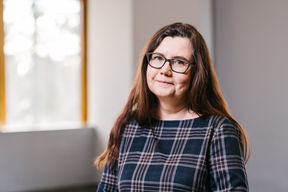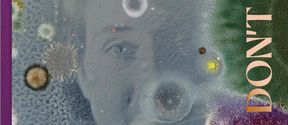Art as We Don’t Know It invites readers into the fascinating world of bioart
Art as We Don’t Know It presents a richly illustrated selection of artworks and bioart research.

When an art educator rhizomizes underground
It is about ten years since I asked then the President of Aalto University Tuula Teeri: “Have you ever heard about bioart?” It was also for me the start to lobby for a bioart laboratory for Aalto. Now, years later, I can compare my part in creating Biofilia to the life of a fungus. At first, I was a little bit coquettish as a sporangium being the Head of the the Department of Art, an art theorist and educator. I was put out my hyphae and spread the word about the undertaking as potentially groundbreaking, striving to organize funding. But soon I realized that the most relevant thing was to find the right companions, which I found in the person of bioart curator Ulla Taipale and scientific collaborator Marika Hellman, to whom I could transmit the essential, if scarce, resources and ingredients to grow a larger network.
That was the point I more or less returned to the role of mycorrhiza and receded underground. It is invigorating for me to follow artists’ work and to supervise dissertations in the field. If possible, I can still transmit sources to artists: we got over 250 applications from all around the world to the GREEN revisited, encountering emerging naturecultures, EU-funded residency in Biofilia during winter 2021. It has been rewarding to discuss with visiting artists and researchers in Biofilia: Oron Catts, Ionat Zurr, Paul Vanouse, Andy Gracie, Christina Stadlbauer. I am not an artist or natural scientist myself, my only practice is to try to grow and kill various plants, weeds and mosses in my garden, as fungi do, and as a hobby to chase after slime molds.
However, I try to see connections and networks and to think theoretically about issues going on in the bioart field. Being an art educator, I have a lot to do to open up issues that many people see as uncanny or even monstrous – lab-based bioart being quite a wet, bloody, and unruly affair. Its aesthetic is largely about sensations, not always sensory-based, but very often mind-created images based on an individual’s earlier experiences, knowledge, or preconception of the nature of something. A slime mold is a good example: when its nature and ways of moving has been explained to people, they start to see something interesting in what was at first a repugnant being. Bioart is much about the prevalence of the interesting over the beautiful, although it has its aesthetic side, too, sometimes producing creations that are magical, ineffable.
After all these years at Aalto University, I am still continually dividing like a mycelium, working in multiple roles, intertwining my hyphae around the roots of Biofilia, absorbing ideas and trying to help artists and scientists to blossom. In turn, they give me an atmosphere in which I can respire.
Helena Sederholm (PhD) is an associate professor of Art Education in the Department of Art at Aalto University School of Arts, Design and Architecture (ARTS). Her background is in art education, art theory, and art history as well as cultural studies. Her research interests focus on contemporary art, art theory, and art & science education. She contributed strongly to create Biofilia – Base for Biological Arts in the Aalto ARTS, and has curated exhibitions, e.g. an international exhibition The Starry Skies of Art with science writer Markus Hotakainen in 2016, accompanied by a book. She has written about art and science – here latest article , “Bioart, Aesthetic and Ineffable Existence”, was published in 2020 in the book Art as We Don’t Know It.
`Outré: Encounters with Non/living Things` online exhibition


Art as We Don’t Know It presents a richly illustrated selection of artworks and bioart research.